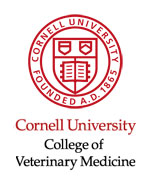"Protected Areas, Human Livelihoods and Healthy
Animals: Ideas for Improvements in Conservation and Development
Interventions"
Gladys Kalema-Zikusoka
Effective protected area management is undermined by disease
transmission at the wildlife, human and livestock interface.
The poorest people in developing countries tend to live at
the borders of protected areas where the value of land is
often reduced because of the threat of “problem” wildlife.
Additionally, most protected areas are found in remote locations
with limited access to adequate health facilities both for
people and their animals, leading to a persistence of preventable
diseases. Zoonotic diseases can be transmitted between wildlife,
people and domestic animals in close contact, especially
if they are closely related. This can potentially have devastating
consequences for public health, wildlife conservation and
ecotourism. In certain instances all three sectors can be
affected.
An ideal example is the association between people and habituated
great apes. In Uganda, scabies skin disease outbreaks in
a tourist group of mountain gorillas (Gorilla beringei beringei)
resulted in morbidity and mortality. These outbreaks are
thought to have been associated with the relatively high
incidence of scabies in the local community. Further scabies
outbreaks in another habituated group of mountain gorillas
is one of the factors delaying the start of tourism to this
group. Ecotourism provides employment for surrounding communities
and revenue that is shared for community development. Not
only are people’s livelihoods improved, but so is their
attitude towards wildlife conservation. This particular case
shows that disease prevention measures in wildlife can only
be effective if public health is improved. Tuberculosis (TB)
and brucellosis are zoonotic diseases that can be transmitted
between cattle and people. Around protected areas, frequently
these cattle mix with closely related wildlife, such as buffalo
(Syncerus caffer) providing an opportunity for disease transmission.
This case shows that preventing disease in people can only
be done effectively by controlling disease in cattle and
wildlife. In both these cases, health education to improve
hygiene including boiling milk (TB and brucellosis) and washing
clothes (scabies) is necessary.
An integrated approach could be more cost effective in preventing
and controlling diseases around protected areas. This could
be limited to close collaboration such as sharing knowledge
and health information between medical, veterinary and wildlife
departments, or could be fully integrated by combining health
programs for wildlife, people and their domestic animals.
Though most protected areas are in remote locations, some
protected areas have relatively good infrastructure for wildlife
conservation and ecotourism activities. People in the wildlife
and tourism community can improve the situation by extending
their resources to improve health service delivery for people
and their domestic animals, such as transportation of medication
to people in remote areas. To achieve a great impact, multidisciplinary
teams from wildlife, medical, veterinary and Information
and Communications Technology (ICT) sectors should be created
to combine expertise in education and health programs. Mutual
training programs in wildlife, domestic animal and human
health monitoring, as well as sharing of laboratory facilities
for disease diagnosis, could help to maximize the use of
limited resources while building local capacity and being
more sustainable. Research on interrelated conservation and
public health issues should be encouraged and results shared
with policy makers. Finally, funds from health donors could
be given to wildlife conservation where it directly affects
public health and similarly funds from conservation donors
could be given to public health where it directly affects
wildlife conservation. Close collaboration between governments,
NGOs, the private sector, universities and schools would
be needed to develop efficient and effective programs.
|
|











